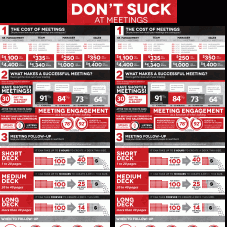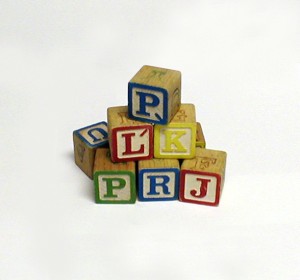 All employees intently listen and watch their leaders. Therefore, it is no surprise that employees have a well-honed sensitivity to leaders who declare or promise things and then either fail to, or take forever to, deliver on a promise. Leaders who exhibit this tendency are said to have a large say/do gap.
All employees intently listen and watch their leaders. Therefore, it is no surprise that employees have a well-honed sensitivity to leaders who declare or promise things and then either fail to, or take forever to, deliver on a promise. Leaders who exhibit this tendency are said to have a large say/do gap.
Heather Bartel, owner of the The Say Do Group, believes leaders with a narrow gap between saying and doing build credibility with their teams. A narrow say/do gap is a strong indicator of openness, honesty, and integrity. These elements compose trust, which is essential for effective leadership.
When George Deeb worked at Red Rocket, his relationship with company leaders started out fine. They said they were committed to doing whatever was necessary to fix any number of problems the company faced.
But once recommendations to solve problems were put forth, leaders never followed through. What’s worse is they said they were working on it, but had no true intention to take action.
When push came to shove, nothing happened. The entire team knew it and frustration took root.
When Deeb worked at iExplore, an adventure tourism site, he was always honest with his team. He followed through on promises. If he said they were going to raise new capital, they did; a new partnership, they did. His narrow say/do gap between 1999-2001 enhanced team trust. This trust was needed when travel businesses imploded after September 11, 2001.
Deeb believes iExplore should have gone bankrupt.
He is convinced that the reason it stayed afloat is due to the trust created from a narrow say/do gap in the two years leading up to that day.
People ultimately remember you for what you do. People ultimately judge you for what you do. And people will only listen to you when there is little-to-no gap between declaration and action.
Close your say/do gap and people will sit upright in their chairs again when you speak.
 It’s the time of year to plan and budget for 2017. We’ve all been through this process before. The importance of a budget cannot be overstated. It provides guidelines for expected income and expenses, it allows you to compare your anticipated financial goals with actual numbers, and it serves as an indicator for how your business is performing. It also allows you to plan ahead and determine what changes, if any, should be considered.
It’s the time of year to plan and budget for 2017. We’ve all been through this process before. The importance of a budget cannot be overstated. It provides guidelines for expected income and expenses, it allows you to compare your anticipated financial goals with actual numbers, and it serves as an indicator for how your business is performing. It also allows you to plan ahead and determine what changes, if any, should be considered.
Jason Green wrote an article in Harvard Business Review providing four practices to make the budget and planning process more effective and less dependent on illusory projections.
Set Expectations
Plan meetings in advance and make clear any kind of projection needs to be supported by facts. Green says key assumptions behind projections must be detailed. He adds, the meeting should focus on a structured discussion but you also want to leave adequate time for dialogue and questions which can take the discussion in any direction.
Build the Case
Green suggests you take each business unit starting from the market demand, and work back to internal costs, capacity, and capability measures. Go beyond the “what’s” and start providing the “whys.” Green says to ask yourself these questions:
Complete your analyses before working on the actual budget. Once you’ve established market demand and key drivers, then start a discussion about your supply, cost position, and capabilities.
Green says, “Bringing both the demand and supply elements of the equation together provides the input for more informed decisions while avoiding the pitfall of assuming demand is a ‘given’ that requires little or no discussion.”
Define the Strategy
Take the role each business unit plays in the grand scheme of things and define the strategic role for them. Green suggests you use a 2x3 “Portfolio Matrix” for which the horizontal axis is "Growth Potential" and the vertical axis is "Economics.”
Whether you use the “Portfolio Matrix” or not, each role should be clear and transparent to everyone. Also, they should understand the role, how it was determined, and how it can change.
Allocation Decision
A lot of businesses use a horizontal approach, which means resources are spread evenly throughout their business units. Green says the actual resource allocation should be done vertically rather than horizontally. This means resources will not be spread evenly and will not just reflect last year’s budget plus inflation.
You need a budget in place to plan ahead, prioritize your distribution of funds, and measure if your financial predictions are met. It also allows you to make decisions in order to improve your business operations with clarity and efficiency.
What tips do you have to build a better budget?
 Meetings are part of life for many people, and some people hate them.
Meetings are part of life for many people, and some people hate them.
When you walk away not knowing what you were supposed to get out of it, or you were given a 40 page slideshow that lost your attention at slide 15, it feels like a waste of your time. Few people come prepared to participate and they aren’t as effective.
I came across some great statistics from an infographic by SalesCrunch.com, Don’t Suck at Meetings.
A few statistics stuck out:
The headline of an article on Open Forum caught my attention: How to Hold Meetings that Nobody Hates. It provides simple advice that is easy to follow.
Communicate the point of the meeting and the topic to be discussed prior to the meeting. Instead of providing a memo for everyone to read, provide an agenda so you don’t lose focus and stay on course. This gives your team a heads up so they can make notes and contribute to the discussion.
Set a time limit to ensure you are getting through all the points of the agenda. Meetings should last about 30 minutes so set a start and finish time and stick to it.
Build questions and discussion points into the agenda if you want engagement. Even though you’re running the meeting, your voice is not the only voice that should be heard. Meetings are also a good place to recognize your team for a job well done. Recognizing them motivates them to keep meeting their goals and getting their tasks complete.
If the topics of your meeting don’t apply to your entire team, then don’t hold a mandatory meeting for everyone. Keep meetings productive with smaller groups of only the people affected.
Meetings should be useful for your team so take the time to plan and prepare. Use them to make decisions, generate discussion and feedback, get new ideas rolling, and set a course of action.
What tips would you provide to keep your meeting from being boring?
 Being a leader entails responsibility and respect plays an important role in being successful.
Being a leader entails responsibility and respect plays an important role in being successful.
Some think they are entitled to respect because of their position or experience, but you need to earn it rather than demand or expect it.
If you have respect, your team will work harder and longer to help you reach your goals.
Kevin Daum of Inc. provides seven tips to help you be the leader who earns, not demands, respect:
You will lack credibility if you say one thing and do another. Don’t be a hypocrite and practice what you preach. To earn respect, lead by example.
Keep all of your commitments. Being late shows a disregard for others. Time is valuable for successful people so take control of your calendar.
Let your team know the best way to reach you. We are overloaded with ways to communicate from social media, to email, to text so limit your channels and respond within 24 hours if you want to appear communication worthy.
Do your homework and state well thought-out facts. When information is too scarce to know for sure, take it as a qualified risk. If you’re wrong, own up to it, smile, and be glad you learned something.
The Inc. article says if you aren’t erring, you are not trying. It also suggests setting an example for how to shake off a failure and bounce back. Encourage people to experiment and be creative in a safe environment. Know mistakes happen to everyone, even the smartest leaders.
Earning respect isn’t a one-way street. Whether your team was wrong or right, show them the same respect that you expect from them. You have to give respect to get it.
Use active listening skills and really hear what people are saying. If a team member is struggling, provide the support they need. However, be careful. According to Daum, respect is lost when the boss placates habitual troublemakers at the expense of the team’s success. A good business leader knows when to support weak players and when to cut them loose when they aren’t pulling their weight.
To be an effective leader, one needs to earn trust and respect. Respect is not something handed to you, but without it, it would be difficult to accomplish your goals.
How do you earn respect from your team?
 The ability to lead comes more easily for some. There are those who are natural born leaders, and those who develop the skills necessary to become a person of influence. We can all learn from mistakes made. The important thing is to use those lessons to make your company stronger.
The ability to lead comes more easily for some. There are those who are natural born leaders, and those who develop the skills necessary to become a person of influence. We can all learn from mistakes made. The important thing is to use those lessons to make your company stronger.
Kathleen Kim, Inc.com contributor, discusses things to learn from bad chief executive officers.
"No company survives without adapting, yet so many CEOs think they can keep on doing what got them success in the past," Sydney Finkelstein, professor at Dartmouth, told Inc.
Kim provides the example of Best Buy. Former CEO Brian Dunn refused to change the business model for Best Buy.
Whether it’s marketing tactics or global expansion, it’s important to keep current on the times. If you don’t, you may not survive.
Money that comes into your company is meant to be used strictly for business purposes. It’s not to be used to pay your mortgage, buy groceries, or other items that have nothing to do with your business.
Most leaders can only take so much pressure before their performance slides while others deliver their greatest successes when times get tough.
"Pressure to grow can lead some people to go over the line and make a decision that jeopardizes the entire company," Finkelstein said.
Own your mistakes and take responsibility for your decisions and actions.
Employees want to develop and learn new skills, and establish a career path. If you don’t give them the opportunity, they will find it at another company. It’s necessary to invest time and money into your employees to succeed.
Research the company before you accept a leadership position. Kim provides the example of Rodrigo Rato, former chairman of Bankia. He is reportedly under investigation for fraud, price fixing, and embezzlement. "Not doing sufficient due diligence on Bankia, he probably didn't understand just how bad a condition the bank was in when he accepted the job," Finkelstein said. Do your research and don’t make the same mistake.
We can all draw inspiration and knowledge from the experience of others. Sometimes we learn the best lessons the hard way.
What lessons have you learned the hard way?
 In 2011, the Academy Award for best documentary feature went to “Undefeated,” which follows coach Bill Courtney and the Manassas Tigers high school football team.
In 2011, the Academy Award for best documentary feature went to “Undefeated,” which follows coach Bill Courtney and the Manassas Tigers high school football team.
Bryan Burkhart, a regular contributor to The New York Times, felt so inspired by this compelling film, he contacted Courtney to learn more about his philosophy on building and leading a team.
A little background first: Up to 2003, the Manassas Tigers held a less-than-impressive record of 5 wins and 95 losses. Six years later, it made its first playoff appearance in team history. The team was led by a successful entrepreneur, the founder of Classic American Hardwoods, which Courtney started out of his living room in 2001. His small business anticipates sales of roughly $40 million this year.
So what does a hard-driving entrepreneur and the subject of an Oscar-winning documentary have to tell us about leadership?
Always Be Recruiting
Courtney walked the halls of Manassas High School on a daily basis, “with a smile and a pat on the back for students as they walked by.” Students responded favorably to his unbridled enthusiasm for the team, as did the nine men who volunteered to serve on his coaching staff, drawn by “the vision for what we could do for the kids.”
Practice is Key to Success
Courtney approached practice on the field the same way he runs his business. It should always be “organized, on time and on schedule,” he says. Through practice (and more practice), he and his fellow coaches taught the promising young athletes to develop the basics for “both general skills and specific positions.”
Motivate by Example
Courtney, dubbed by Esquire as “Coach of the Year,” believes in working hard and figuring out how to make everyone else do the same.
The most effective way to achieve this is by setting the right example. “At Manassas, the kids knew that I was running my own business … but they saw me working hard every day, volunteering at the school to be their coach,” says Courtney. Seeing how much he cared about them, the young athletes felt motivated to do the same for him.
Focus on the Fundamentals
In business and on the gridiron, Courtney adheres to the fundamentals:
The key is “knowing the talent on your team,” he says. “Players win games, not coaches.”
Leadership qualities can be found in all walks of life, from the board room to the locker room. When opportunities arise to glean some insights from successful leaders, it’s always worth hearing what they have to say.
How do you use the fundamentals to build your team?
 For some business leaders, prioritizing yourself can be a big challenge.
For some business leaders, prioritizing yourself can be a big challenge.
A lot of people have a hard time saying “no,” but that one word is very powerful. It’s one of the most useful skills leaders need to develop, especially when it comes to living a more productive and healthy life.
The value of their time is one of the hardest things for some leaders to learn, and safeguarding it means you have to say no and be constructively selfish.
Always trying to please others can get you into trouble because it takes your focus away from things that really need your immediate attention.
“Saying no to unnecessary commitments can give you the time you need to recover and rejuvenate. Saying no to daily distractions can give you the space you need to focus on what is important to you. And saying no to temptation can help you stay on track and achieve your health goals,” said James Clear, contributor to the Buffer blog.
Mary Jo Asmus, contributor to Smart Blogs on Leadership, has some tips on how to say no in order to be more effective.
Take the time to get organized. Asmus suggests setting aside thinking time to remind yourself what is most important for you to lead your organization. If there’s an area you need to focus on, that should be your priority. The other to-do’s on your list can be delegated or placed at the bottom of your list.
Know your “no.” Keep a list of things you have pending so you are aware of everything you need to get done. Then, Asmus suggests using whatever system you have at your disposal and log everything you’ve been asked to do or think you need to do, both in the short and long term. Then check your list regularly. Do your tasks match your organizational mission and values? What’s the urgency of the request? Is there a delegation or learning opportunity for someone on your team to be responsible for some of the items?
You’ll most likely find some things you don’t need to do and other items that can be delegated. You have to let go of some of the control because you can’t do it all on your own.
You’ll get push-back so develop a strategy to communicate your “no.” There will always be people on your team who think their item is urgent and needs your attention or who think if you’re gone, the world will fall apart. It won’t, they can handle it, but sometimes they just need a push. Be honest with them about your priorities and get them to think on their own. Ask them, “What do you think?” It’s a frustrating question, but it will get them to start thinking about their problem before they come to you for a solution.
Reassess your “no’s.” This is more of that thinking time mentioned earlier. “Regular thinking time is a requirement to be deliberate in working through your list to get to the ‘no’s,’” says Asmus.
Too often people are afraid of saying “no.” However, it’s better to say no than not respond, or say yes but not deliver.
Do you struggle with saying no? How do you cope with the problem?
Image credit: vlauria via Flickr
 Of all the things that contribute to success in life and business, one fact can’t be denied: Genuinely successful people achieve their goals because they have built extraordinary relationships.
Of all the things that contribute to success in life and business, one fact can’t be denied: Genuinely successful people achieve their goals because they have built extraordinary relationships.
“Real success is impossible unless you treat other people with kindness, regard, and respect,” says Jeff Haden, a contributor to Inc.
People who build great relationships exhibit certain traits which draw others to them and create a lasting bond of mutual trust and respect.
Here are eight such traits Haden describes:
When a problem arises, some people step up and take the hit (whether it’s their fault or not). They know they can handle the kind of criticism that could seriously damage another person’s self-esteem.
“Very few people offer help before they have been asked,” Haden says, “Even though most of the time that is when a little help will make the greatest impact.”
People intent on building great relationships are sensitive to situations where others are struggling. They look for specific ways to help (which gets past the other person’s typical response, “No, thanks, I’m fine.”).
Sometimes the questions people ask aren’t the ones they want answered. Haden offers these scenarios:
People who build extraordinary relationships listen for the larger, unasked questions. Those are the questions they seek to answer.
Some people with outsized personalities never know when to “dial it back,” Haden says.
Men and women looking to build great relationships, on the other hand, know “when to be over the top and when to be invisible, and when to take charge and when to follow.” They understand that multifaceted people adapt to different situations, enabling relationships to flourish and grow.
How often do you give unexpected praise to someone? Or take a moment to do something nice for another person, not because you have to, but because you want to? This is the stuff that makes great relationships.
It’s one thing to apologize when you’ve done something wrong. It’s another thing, as Haden notes, to apologize before anyone thinks you should.
People who accept blame, who explain why they’re sorry and who don’t push blame back on others—“those are people everyone wants in their lives, because they instantly turn a mistake into a bump in the road rather than a permanent roadblock,” says Haden.
In business, each person goes in wanting something. But extraordinary relationships benefit both parties. People who seek to forge such a relationship think first about what they can give to the other party.
We all pay special attention to the words of someone in authority or a position of power. What about the guy who fixes a leaking faucet?
If you want to build a great relationship, look beyond the source and, as Haden puts it, “consider the information, advice, or idea based solely on its merits.” Know when you hear something of value, regardless of who’s saying it.
“Every relationship, however minor and possibly fleeting, has value,” says Haden. To build extraordinary relationships, recognize and celebrate this fact—whether you’re talking to a fellow business leader or the crossing guard at your daughter’s elementary school.
What do you do to build an extraordinary relationship?
 Businesses get so caught up in the relentless pursuit of new customers, they often forget about the customers they already have. It’s a costly mistake, since by some estimates, acquiring new customers costs five to 10 times as much as keeping loyal customers. And no business survives long using that arithmetic.
Businesses get so caught up in the relentless pursuit of new customers, they often forget about the customers they already have. It’s a costly mistake, since by some estimates, acquiring new customers costs five to 10 times as much as keeping loyal customers. And no business survives long using that arithmetic.
Jason Brick, a contributor to Open Forum, warns “preventable losses” are the most damaging to small businesses.
He shares some tips about common mistakes all businesses make—and how you can avoid losing a customer.
“Sharing customer information can represent a new income stream for your business,” Brick concedes, but at what cost? When customers purchase your product or service, they are willing to share personal data with you. They trust you to be responsible caretakers of that data. Once trust is broken, you’ve lost a customer.
Politics and religion are hot-button topics under the best of circumstances, so there’s no good reason to unleash these “conversational time bombs” within the confines of your business.
“If a client brings the topic up, it’s best to be noncommittal while listening politely,” says Brick. Good advice!
Some businesses will go to great lengths to avoid owning up to their mistakes. Some even cast blame on their customers (“used our product incorrectly,” etc.).
Even if the issue is the customer’s fault, the wisest approach is to offer a sincere apology. As Brick notes, “The price of replacing a purchase or giving away a few hours of service is nothing compared to the future value of that customer.”
Amazon offers suggestions based on the products a customer buys, so why can’t you? “Firing off a set of suggestions without regard for who you’re asking shows you don’t value the customer as an individual,” Brick says.
On the other hand, if you take time to make suggestions based on a specific customer analysis, you may be providing genuine value to your customers. One-size-fits-all doesn’t work here.
Rudeness to customers takes many forms: inattention, loss of temper, acting bored or arrogant. It can happen to the best of us, but if it occurs in the course of a customer encounter, you will likely never see that customer again.
“Train your employees—and yourself—to leave those behaviors behind when they come to work,” Brick says. “Nothing you wouldn’t say or do to your favorite grandmother has a place when working with customers.”
Time and again, it’s the little things that count. How much effort does it take to acknowledge customers you’ve served before? Some small notice of their repeat business helps keep them loyal. As Brick suggests, “A ‘how did you like that shirt you bought last week?’ can go a long way."
Take a few minutes to remind your team of the value of honoring loyal customers who continue to purchase your products or services.
What are your own customer-retention best practices?
